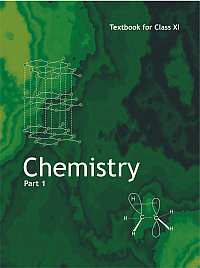(HOT) UPSC Current Affairs 2025 PDF
NEW! The Gist (NOV-2025) | E-BOOKS
(Download) NCERT Book For Class XI : Chemistry Part-I
Chemistry Part-I : Class 11th
CONTENTS
Unit 1 Some Basic Concepts of Chemistry
1.1 Importance of Chemistry
1.2 Nature of Matter
1.3 Properties of Matter and their Measurement
1.4 Uncertainty in Measurement
1.5 Laws of Chemical Combinations
1.6 Dalton’s Atomic Theory
1.7 Atomic and Molecular Masses
1.8 Mole concept and Molar Masses
1.9 Percentage Composition
1.10 Stoichiometry and Stoichiometric Calculations
Unit 2 Structure of Atom
2.1 Sub-atomic Particles
2.2 Atomic Models
2.3 Developments Leading to the Bohr’s Model of Atom
2.4 Bohr’s Model for Hydrogen Atom
2.5 Towards Quantum Mechanical Model of the Atom
2.6 Quantum Mechanical Model of Atom
Unit 3 Classification of Elements and Periodicity in Properties
3.1 Why do we need to Classify Elements ?
3.2 Genesis of Periodic Classification
3.3 Modern Periodic Law and the present form of the Periodic Table
3.4 Nomenclature of Elements with Atomic Number > 100
3.5 Electronic Configurations of Elements and the Periodic Table
3.6 Electronic Configurations and Types of Elements:
s, p, d, f-Blocks
3.7 Periodic Trends in Properties of Elements
Unit 4 Chemical Bonding and Molecular Structure 96
4.1 Kössel-Lewis Approach to Chemical Bonding
4.2 Ionic or Electrovalent Bond
4.3 Bond Parameters
4.4 The Valence Shell Electron Pair Repulsion (VSEPR) Theory
4.5 Valence Bond Theory
4.6 Hybridisation
4.7 Molecular Orbital Theory
4.8 Bonding in Some Homonuclear Diatomic Molecules
4.9 Hydrogen Bonding
Unit 5 States of Matter
5.1 Intermolecular Forces
5.2 Thermal Energy
5.3 Intermolecular Forces vs Thermal Interactions
5.4 The Gaseous State
5.5 The Gas Laws
5.6 Ideal Gas Equation
5.7 Kinetic Molecular Theory of Gases
5.8 Behaviour of real gases: Deviation from Ideal Gas Behaviour
5.9 Liquifaction of Gases
5.10 Liquid State
Unit 6 Thermodynamics
6.1 Thermodynamic State
6.2 Applications
6.3 Measurement of ΔU and ΔH: Calorimetry
6.4 Enthalpy Change, ΔrH of a Reaction
6.5 Enthalpies for Different Types of Reactions
6.6 Spontaneity
6.7 Gibbs Energy Change and Equilibrium
Unit 7 Equilibrium
7.1 Equilibrium in Physical Processes
7.2 Equilibrium in Chemical Processes – Dynamic Equilibrium
7.3 Law of Chemical Equilibrium and Equilibrium Constant
7.4 Homogeneous Equilibria
7.5 Heterogeneous equilibria
7.6 Applications of Equilibrium Constants
7.7 Relationship between Equilibrium Constant K Reaction Quotient Q and Gibbs
Energy G
7.8 Factors Affecting Equilibria
7.9 Ionic Equilibrium in Solution
7.10 Acids, Bases and Salts
7.11 Ionization of Acids and Bases
7.12 Buffer Solutions
7.13 Solubility Equilibria of Sparingly Soluble Salts
Download Free NCERT PDF
Printed Study Material for IAS Exam (UPSC Pre Cum Mains Combo)
Get Gist of NCERT Books Study Kit for UPSC Exams
Courtesy: NCERT.NIC.IN




